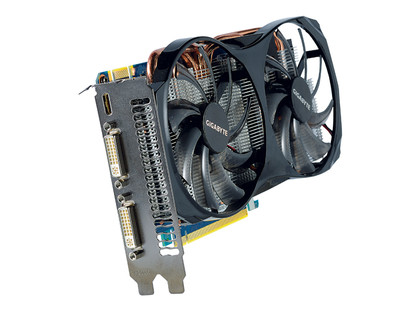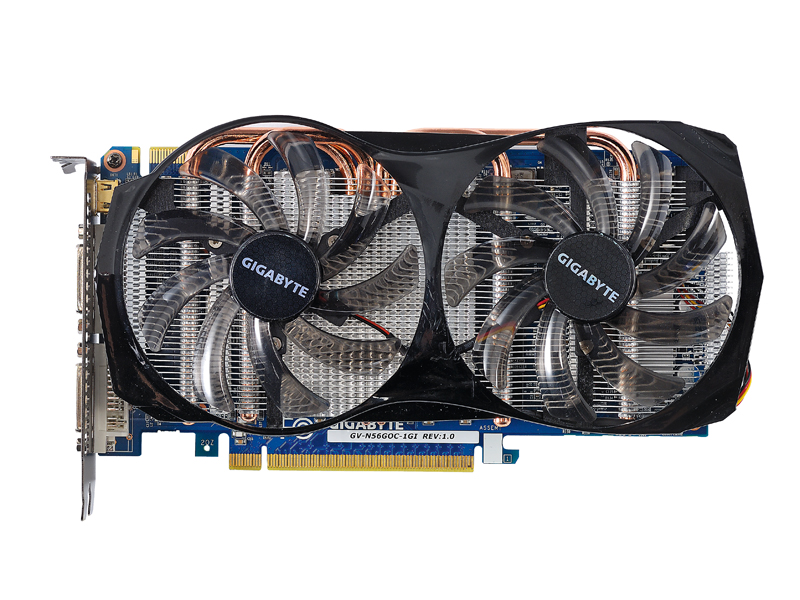TechRadar Verdict
Pros
- +
Impressive overclocker
- +
Great performance
- +
Will cope with any game
Cons
- -
Pricey compared to HD 6850
Why you can trust TechRadar
When the GTX 560 Ti first arrived Nvidia was quick to point out it wasn't a like-for-like replacement of the GTX 460, as the GTX 550 and GTX 570 had been for their respective brethren.
The GTX 460 then still had life left in it. Realistically though that life was snuffed out with the non-Ti version of the GTX 560. With the same core configuration as the out-going 1GB GTX 460: 336 CUDA Cores, 56 texture units and 32 ROPs - and the GTX 5-series' transistor-level enhancements over the GTX 4-series GPUs, this was always going to be putting the old classic out to pasture.
Indeed where once the 1GB version of the GTX 460 cold be picked up for around £120, now you're lucky to be able to find it for the £150-odd you can pick up this overclocked version of the GTX 560 for.
And with a decent overclock this card can perform graphical wonders. Sadly Gigabyte has only seen fit to provide 20MHz on top of the 810MHz core clock of the standard GTX 560, but with the impressive Windforce cooling array sitting atop it we managed to hit well over 900MHz without the card breaking a sweat.
Still, at this rather conservative factory-overclock it's quite comfortably the fastest GPU at the budget end of the market. It may be at the top of the £150 budget category but it's still a very impressive little card.
This card can hit 20fps in Metro 2033, bats around the same as the HD 6850 at 1080p in Shogun 2 and almost hits 100fps in Far Cry 2. Any game you throw at it at 1,680 x 1,050 you will be able to play at the highest settings quite comfortably. And you can be relatively sure that will continue to be the case for a fair while yet with modern game requirements not actually changing much these days.
TechRadar Labs

Thermal performance
100% Load: Degrees Centigrade: Lower is better
XFX HD 6850: 55
GIGABYTE GTX 560 OC: 58
Sign up for breaking news, reviews, opinion, top tech deals, and more.
DirectX 11 tessellation performance (2,560 x 1,600)
Heaven 2.5 Frames Per Second: Higher is better
XFX HD 6850: 12.3
GIGABYTE GTX 560 OC: 13.5
DirectX 11 gaming performance (1,920 x 1,080)
Shogun 2 Frames Per Second: Higher is better
XFX HD 6850: 32
GIGABYTE GTX 560 OC: 31
Power performance
100% Load Watts: Lower is better
XFX HD 6850: 210
GIGABYTE GTX 560 OC: 270
DirectX 11 gaming performance (1,680 x 1,050)
DiRT 3 Frames Per Second: Higher is better
XFX HD 6850: 47
GIGABYTE GTX 560 OC: 58
DirectX 11 gaming performance (1,680 x 1,050)
Metro 2033 Frames Per Second: Higher is better
XFX HD 6850: 18
GIGABYTE GTX 560 OC: 20
DirectX 10 gaming performance (1,680 x 1,050)
Just Cause 2 Frames Per Second: Higher is better
XFX HD 6850: 39
GIGABYTE GTX 560 OC: 52
DirectX 10 gaming performance (1,680 x 1,050)
Far Cry 2 Frames Per Second: Higher is better
XFX HD 6850: 75
GIGABYTE GTX 560 OC: 96
Fast enough?

While it is the fastest card on test it's still tough to recommend over the HD 6850 for those on a budget. The extra silicon and performance of the GTX 560 means that it's also the most power hungry card here.
We measured it topping out at 270W under 100 per cent GPU load, that's 60W more juice than the AMD enemy. The AMD card also only needs a single 6-pin PCI-e power connector to link it up to the PSU, whereas the GTX 560 needs to have two of them to get the GPU up and running.
For most people that's not a huge thing, but if your PSU only has a single PCIe connector then it could be an issue. It will still only really need a 500W power supply but unless you're rocking a modern unit it might become an issue.
In the end though it all comes down to pricing. At the top-end it's a fight between the GTX 560 and HD 6850 and with the AMD card coming in £30 cheaper for just as relevant performance. The HD 6850 just about pips the Nvidia card to the post, even in this overclocked Gigabyte guise.
Follow TechRadar Reviews on Twitter: http://twitter.com/techradarreview

Ad creative by day, wandering mystic of 90s gaming folklore by moonlight, freelance contributor Phil started writing about games during the late Byzantine Empire era. Since then he’s picked up bylines for The Guardian, Rolling Stone, IGN, USA Today, Eurogamer, PC Gamer, VG247, Edge, Gazetta Dello Sport, Computerbild, Rock Paper Shotgun, Official PlayStation Magazine, Official Xbox Magaine, CVG, Games Master, TrustedReviews, Green Man Gaming, and a few others but he doesn’t want to bore you with too many. Won a GMA once.
